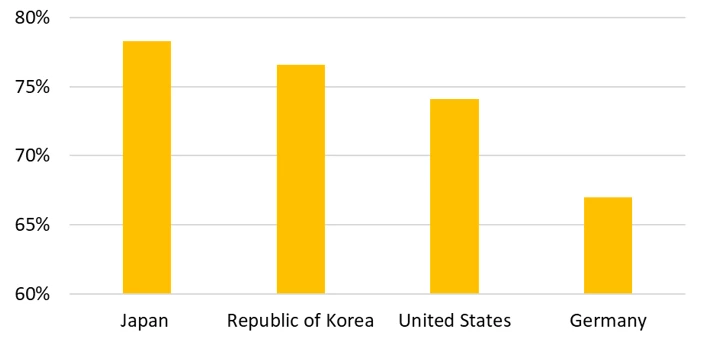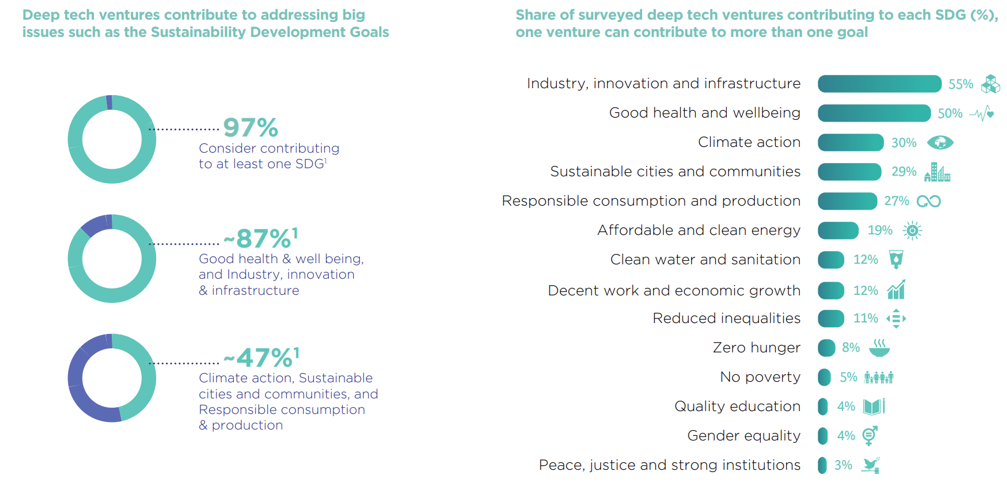 Ain Beni Mathar Integrated Combined Cycle Thermo-Solar Power Plant. | © Dana Smillie / World Bank
Ain Beni Mathar Integrated Combined Cycle Thermo-Solar Power Plant. | © Dana Smillie / World Bank
The World Bank recently held its premier conference, the Annual Bank Conference on Development Economics (ABCDE). As the acronym suggests, the conference series is dedicated to the most fundamental development topics. This year, the theme was Growth and Resilience—it doesn’t get more fundamental than this.
Indermit Gill, the World Bank’s chief economist, opened the conference explaining the state and importance of growth and resilience in the current world economy. He closed it with a panel discussion on climate change, arguably the most formidable risk facing the planet. In between, we heard about 50 presentations of cutting-edge papers, policy positions, and insightful discussions—truly an intellectual feast!
A policy takeaway from the conference is that governments cannot tackle the growth and resilience challenge on their own. The expectation that it can generate sustained growth and resilience without the private sector is both unreasonable and unrealistic.
Growth and resilience
Economic growth brings about jobs, family and business income, and government revenue. When growth is sustained and inclusive, it opens a way out of poverty and into prosperity (Dollar, Kleineberg, and Kraay 2016; Loayza and Pennings 2022). Resilience reflects the economy’s capacity to withstand and recover from adverse shocks, avoiding risk, mitigating harm, and protecting lives and livelihoods—especially of the most vulnerable (World Development Report 2014: Risk and Opportunity). Together, economic growth and resilience can create virtuous cycles that provide stability and encourage future investment and innovation.
Governments create the right conditions…
Policy and government action matter. Governments can create a favorable environment for a competitive and dynamic economy, where economic growth can occur naturally. Governments can achieve these outcomes both through macroeconomic stability (such as controlling inflation and public indebtedness) and through microeconomic regulatory efficiency (such as eliminating red tape and reducing labor-market rigidities).
They can also address risks—by taking direct action to manage large and systemic risks (such as financial crises, pandemics, and climate change), discouraging excessive risk-taking (such as building in flood-prone areas), and helping create insurance markets and social services against idiosyncratic risk (such as sickness, disability, and unemployment).
… but the private sector is the “engine of growth” and “elastic band of resilience”
In developing countries, the private sector generates about 90 percent of jobs (USAID 2021), over 60 percent of output (IMF 2013), and over 80 percent of government revenue (UN 2020) (Figure 1a). And this extends to other vital aspects of the economy. In Africa, for instance, the private sector provides two-thirds of total investment and contributes about three-quarters of credit (African Development Bank 2011). Businesses play an important role in most countries known for their prowess in research and development, accounting for more than 75 percent of total R&D funding in Japan and the Republic of Korea, and over 60 percent in Germany and the United States (Burke, Okrent, and Hale 2022) (Figure 1b).
Figure 1. The private sector makes a large share of the economy
Figure 1a. The private sector creates most jobs, output, and government revenue in developing countries

Sources: IMF 2013; UN 2020; USAID 2021.
Figure 1b. The private sector funds most R&D in top R&D performing countries

Sources: Global Innovation Index 2022; Anderson G, Jankowski J, and Boroush M 2023; Statistisches Bundesamt (Destatis) 2023.
Private entrepreneurs are responsible for the increasing diversity and sophistication of goods and services flowing into markets, while private companies supply an increasing share of essential public services in banking, telecommunications, health, and education. In Africa, about 140 telecom, fintech, and other companies are helping reshape the fast-growing mobile-money market with solutions for consumers and businesses alike (McKinsey & Company 2022). Private entrepreneurs are also driving innovation to manage the risks and opportunities the world is currently facing, often at the cutting edge of technological progress. In the Caribbean, for example, entrepreneurs are bringing solar-powered electric vehicles to their markets to better withstand oil-price shocks (IFC 2023). This not only contributes to climate change mitigation but also taps the Caribbean’s most abundant energy source—the sun. Deep-tech companies are extracting carbon dioxide from the atmosphere, mapping cropland in conflict-affected regions, and supplying internet connection via satellites across developing countries (Nedayvoda, Mockel, and Graf 2020). In fact, 97% of deep-tech ventures contribute to at least one of the United Nations’ Sustainable Development Goals (BCG and Hello Tomorrow 2021) (Figure 2).
Figure 2. Deep-tech companies are helping address fundamental issues

Note: Reprinted from “Deep Tech: The Great Wave of Innovation”, by BCG and Hello Tomorrow 2021, January. Retrieved from: https://hello-tomorrow.org/deep-tech-the-great-wave-of-innovation. The results came from 1,277 companies surveyed in 2018/2019. Many start-ups address more than one United Nations’ Sustainable Development Goal (SDG).
Governments and the private sector need each other to succeed. Without an enabling business environment created by governments, the private sector is like a rusty engine that grumbles and barely moves. And it is also like a rigid elastic band that breaks at first contact. But virtuous cycles can and do occur too. In Georgia, for example, a 2004 tax reform digitalized the tax system, reduced rates, and eliminated a series of minor local taxes that had been generating little revenue (Akitoby et al. 2018). This gave businesses greater incentives to operate openly in the formal sector and invest in the economy (U.S. Department of the Treasury 2004). In turn, Georgia’s tax–revenue–to–GDP ratio doubled by 2008 (Akitoby et al. 2018), providing the government more fiscal space to improve their public services and institutions.
Data as a mirror and a compass
Alice: “Would you tell me, please, which way I ought to go from here?”
The Cheshire Cat: “That depends a good deal on where you want to get to.”
—Lewis Carroll, Alice in Wonderland
Data can serve as a mirror and a compass for governments and their countries that have opted for economic growth and resilience. Methodically assembled data can benchmark public policies and the business environment against good practice and solid evidence. This mirror and compass will tell us how best to unleash and channel the energies of the private sector for growth and resilience. The economic and social benefits that will ensue cannot be overestimated.
Taylor Boyce, Charlotte Nan Jiang, and Joe Rebello provided excellent inputs and comments.
Click to find out more about the Global Indicators projects and data: Business Ready, Subnational Business Ready, Enterprise Analysis, and Women, Business and the Law.


Join the Conversation